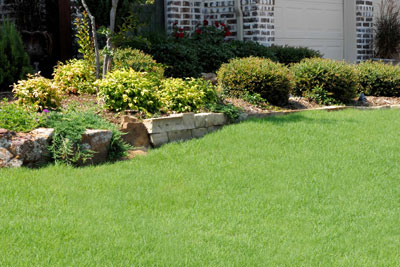Question of the Week 1: April 13, 2017
“Neil, how can I get my lawn to thicken up and be beautiful this year? It’s never looked very good.
I hear this many times every spring and summer. I’m going to point out the shortfalls I see people making most commonly in the hopes they will help you get better results.

Photo: Thick lawns are almost as prized as thick heads of hair. Some of us will have more luck accomplishing it with our lawns!
Here are 6 steps to healthier turf…
1. Be certain there’s enough sunlight. Remember that no sod farm is in the shade – all grasses grow best in full sun.
Bermuda lawns need at least 6 to 8 hours of hot, direct sunlight daily during the growing season. More would be better.
Zoysias need 6 hours of sunlight.
St. Augustine needs 5 or 6 hours in North Texas, and 4 hours in South Texas. (Less there because it rarely goes dormant due to warmer winter temperatures, and it doesn’t have to ramp up new growth in the spring.
2. Mow at the correct height. Some people have the mistaken idea that they should “mow high.” Some even tell me that they have their mowers set on the highest option available. That’s usually upwards of 4 inches, while the recommended mowing height for bermuda is 1-1/4 and St. Augustine 2 to 2-1/2 inches. Tall grass quickly weakens and allows weeds to invade.
3. Mow regularly so that you never remove more than 1/3 of the grass blades’ length. That may translate to 4- or 5-day intervals in summer.
4. Water deeply, then let top of soil dry somewhat before you water again. Many people apply water in small bursts of 10 or 20 minutes every day without knowing how deeply it penetrates or whether their ground is staying way too wet.
5. Apply an all-nitrogen fertilizer that has half or more of that nitrogen in slow-release form for sustained feeding. Fertilize in early April, early June and early September for St. Augustine. Feed bermuda every two months beginning now and ending in early October.
6. Watch for common pest problems. Bermuda mites, grub worms and cottony blight bother bermuda. Take all root rot, gray leaf spot, chinch bugs, brown patch and possibly white grub worms attack St. Augustine, somewhat in that chronological sequence from spring until fall.
